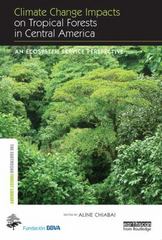Read Figures 1 and 2 and the following extracts (A to C) before answering question 6. Write your answers in the spaces provided. The East African Community (EAC) Burundi Kenya Rwanda Tanzania Uganda GDP (US$ bn) 2.47 37.23 7.10 28.25 19.80 Population (mn) 16.14 62.78 18.21 58.43 48.89 GDP per capita (US$) 390 483.48 405 GDP per capita PPP 483 1517 1 167 1 380 1 165 (US$) HDI 0.355 0.519 0.434 0.476 0.456 IHDI no data 0.344 0.287 0.346 0.303 Figure 1 Economic indicators for the five EAC member countries, 2012 Extract A Burundi's economic growth Burundi has maintained a stable macroeconomic environment and over recent years improved its performance in health, education and gender equality. However, in spite of this recent progress, Burundi's economic growth has been modest compared to neighbouring countries in the EAC. Burundi is a small, land-locked country and is one of the most aid-dependent countries in the world. The country is vulnerable to external shocks, such as volatile food and energy prices, declining aid flows, and the adverse impact of climate change. These factors are made worse by the high proportion of current expenditure in the government budget, and a high level of tax exemptions - counting for as much as 3% of GDP. Coffee and tea make up almost 70% of Burundi's total export earnings. This lack of export diversity makes it difficult to widen the tax revenue base and finance public investments.(billion dollars) 2.0 1985 2005 1.6 1995 2008 1.2 0.8 0.4 Euro area United china Developing Rest of Within EAC States Asia Africa Figure 2 Value of EAC exports 1985-2008 (US$ billions) Extract B Trade in East Africa The EAC was established as a free trade area in 2000 by Kenya, Tanzania and Uganda, with Burundi and Rwanda joining in 2007. Its objectives are the promotion of free trade and the free movement of capital and labour among its members. In 2013, an agreement was signed outlining plans for launching a monetary union by 2024. Between 2000 and 2011, lower tariffs within the EAC boosted regional trade, offering the five member countries a route to faster growth. During 2000-10, intra-regional exports increased from US$700 million to US$2 billion. Rwanda's exports have grown the most during this period, from US$1.6 million to US$156 million, but are still a fraction of those of Kenya, the region's largest economy. Kenya's exports to the other EAC members were about US$1.2 billion in 2010. In contrast, export growth in Burundi - the poorest member - has remained constant and imports have declined, mainly because of civil war and inferior infrastructure, such as airports, roads, and docks.Extract C The costs and benefits of monetary union There are major costs and benefits of a monetary union between EAC members. One of the issues is the different degrees of economic openness of their economies. The level of economic openness is measured by trade as a percentage of GDP. Kenya is the most open economy in the region (60.6%), followed by Tanzania (49.5%), Uganda (41.3%), Rwanda (35.4%) and Burundi (28.8%). However, economic openness has been increasing in all countries except Burundi where the situation deteriorated between 2006 and 2010.These differences in the degree of trade openness indicate that EAC countries may face asymmetric shocks, a situation which does not support the EAC monetary union in the current situation. However, if the observed trends continue, the increase in economic openness will contribute to building a solid foundation for the success of the EAC common currency, which would help to reduce the transaction costs for trade and investment between EAC members. However, according to the EAC Trade Report, gross intra-EAC trade was only 3.1% of their GDP in 2010. In the EU, by contrast, the value of intra trade was 26% of GDP in 1998 in the area that would adopt the euro; by 2007 this had increased to 33%. Thus trade integration in the EU was much deeper than in the EAC. The benefits, in the form of reduced transaction costs, derived from a common currency were small in the European Monetary Union, and will thus be even smaller in the FAC monetary union









